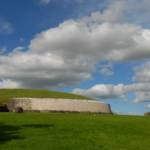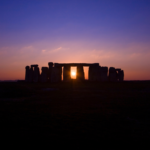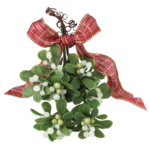 Today is the shortest day of the year, the winter solstice, which, along with the summer solstice and the two equinoxes, mark the quarter points of the Earth’s journey around the sun. Ancient people recognized these and celebrated them. Many of their traditions can be found in the Christian celebration of Yule.
Today is the shortest day of the year, the winter solstice, which, along with the summer solstice and the two equinoxes, mark the quarter points of the Earth’s journey around the sun. Ancient people recognized these and celebrated them. Many of their traditions can be found in the Christian celebration of Yule.
This is a significant event in the annual calendar marking the turn toward spring. Some cultures built monuments to mark the day. A few of these, such as Newgrange and Stonehenge still stand. Newgrange is aligned to illuminate the main passage chamber with the rising sun on the Winter Solstice. Stonehenge, built around 2500 BC, was designed to track the movement of the sun over the year.
Many historians believe Yule is rooted in the ancient Norse folk tradition known as Jul, a time to honor Odin and ensure the return of spring. Its themes of rebirth and renewal include lighting candles, bonfires, food, and celebration. But it could equally claim its heritage in many other cultures. The traditions of each are similar. The English monk Bede wrote in the 8th century about its pagan Germanic origins. In any case, it marked the passage of time as the days grew longer.
Whatever its origins, it contains common elements. Falling on or around the shortest day, it is either a hope for the coming of spring or a celebration that they made it through the dark time and the days were growing longer.
 Yule Log: Today, this is a tasty treat, However, traditionally it was a large log of a fruit-bearing tree which was burned on the hearth, symbolizing the light and warmth of the sun. The Scandinavians burned Ash to honor Thor, while ancient Celts kept an Oak log burning to prevent spirits from entering. Christians burn a little of the log each day until Twelfth Night.
Yule Log: Today, this is a tasty treat, However, traditionally it was a large log of a fruit-bearing tree which was burned on the hearth, symbolizing the light and warmth of the sun. The Scandinavians burned Ash to honor Thor, while ancient Celts kept an Oak log burning to prevent spirits from entering. Christians burn a little of the log each day until Twelfth Night.
Candles: This one is a bit trickier to tie to a holiday or celebration since candles were a daily source of light. But there are mentions in some cultures of leaving one burning overnight to lure back the sunshine and keep spirits away.
Bonfires: These can be tied to almost any cultural festival, representing the sun’s light and heat.
Feasting: Yule was a time for sharing food, and meat often played an important role. It wasn’t easy to keep live animals through the winter. The dishes were typically hearty and filling; meat pies and thick soups provided a warm meal for everyone. Nuts and berries were baked into loaves of bread using local grains and sweetened with honey.
 Evergreen Decorations: Evergreens were thought to contain magic over death as they remained green throughout the winter and, therefore, played a prominent role in solstice celebrations. Branches of trees were cut and brought inside to decorate their homes. Some cultures believed this encouraged the sun to return. Often, they wove them into wreaths representing the wheel of life.
Evergreen Decorations: Evergreens were thought to contain magic over death as they remained green throughout the winter and, therefore, played a prominent role in solstice celebrations. Branches of trees were cut and brought inside to decorate their homes. Some cultures believed this encouraged the sun to return. Often, they wove them into wreaths representing the wheel of life.
However, some plants had important significance to ancient people. Holly symbolized hope. They placed these in the windows, believing the prickly edges would prevent evil beings from entering. Mistletoe was sacred to the Celtic Druids and used in their solstice rituals. The green leaves represented the Mother Goddess, while the white berries were the seed of the Oak King. While also a symbol of fertility, branches were hung in doorways to prevent evil from thunder and lightning.
Gift Giving: This was a way of sharing goodwill and prosperity with others, a tradition that has continued into the modern day.
Wassailing: The term comes from Old English, meaning to be in good health. Villagers would gather to sing carols and toast each other, wishing health and prosperity to their community.
 From ancient Greeks and Romans to Native Americans, many cultures celebrate similar themes of rebirth and renewal associated with the Winter Solstice to honor their deities, seek protection from harm, and make offerings for a prosperous year to come.
From ancient Greeks and Romans to Native Americans, many cultures celebrate similar themes of rebirth and renewal associated with the Winter Solstice to honor their deities, seek protection from harm, and make offerings for a prosperous year to come.
And as you can see, many of our Christmas traditions have their roots in these pagan celebrations. With the lengthening days, I look forward to the warmth and sunlight of spring.
